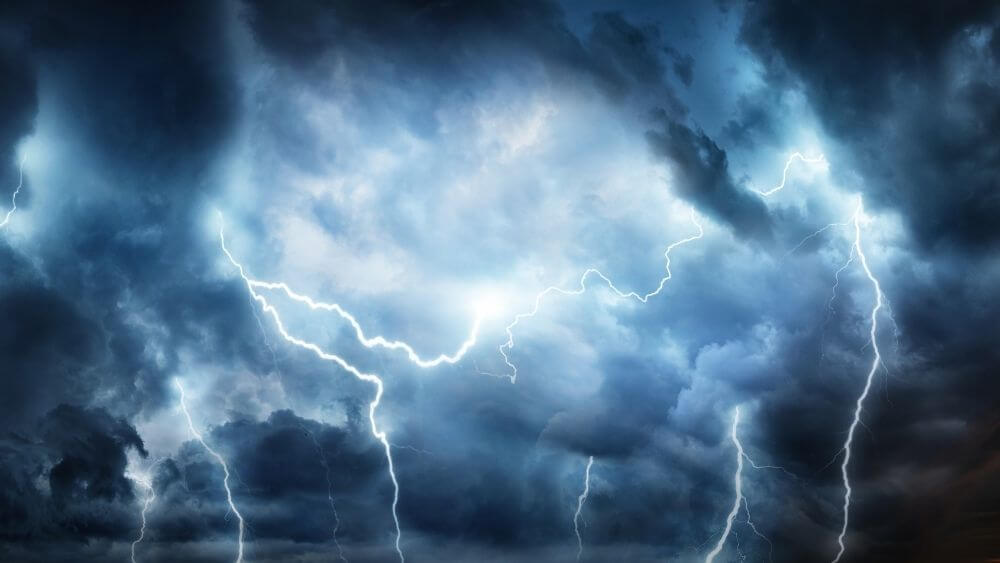What is Lightning?

Ever wondered what those beautiful streaks of light which brightens up the skies at night are made of? Those that reflect so many bright colours, and make so much light and sound, what could these be actually?
Let’s find out.
Contents
Explaining Lightning
In simple words, lightning is a bright flash of electricity that occurs in the sky, usually during heavy rainfall or after a powerful storm.
The scientific reason behind this is that when the raindrops in the clouds freeze and begin to strike each other, resulting in the building up of electricity. When there is too much electric charge that is build up, it gets released in the form of giant sparks called lightning.
What’s more interesting is that these fearful looking lightning strikes, only last for a fraction of a second!
Lightning And Sparks
Lightning is always accompanied by light and sound. Though the light is seen earlier than the crackling sound it makes. Do you know why this happens? This is because light actually travels faster than sound and so the light reaches us first and then the sound. You will often see a bright flash across the sky but hear a loud crackling noise a few seconds later.
Now, having said this, let’s understand the various kinds of lightning that is possible.
Noisy Flashes
A lightning flash is of a burning temperature, and is able to heat up the surrounding air. It can expand very quickly and produces a noisy crash of thunder.
Fearsome Forks
Forked lighting is the name given for lightning that appears as jagged lines of light splitting up into several branches.
Ground Strikes
This is the most dangerous category of lightning. Cloud-to-ground lightning mostly strikes tall things, such as trees and buildings.
This powerful electric current can cause great damages and is able to set things on fire. That is why it is always recommended to not stand under trees during a thunderstorm.
Sparking Clouds
Not all lightning strikes are able to reach the ground. Cloud-to-cloud lightning occurs when huge amount of electric sparks leap across the sky from one storm cloud to another. These huge flashes of light are known as sheet lightning.
Fun Facts
- Thunderstorms can stretch as wide as 20 miles (30 km).
- Lightning flashes have a scorching temperature of 54,000°F (30,000°C); this is five times hotter than the surface of the Sun.
Related questions
- What is the difference between thunder and lightning?
- What happens when lightning strikes a tall tree or building?
- What causes the different colours in lightning?
Fill in the Blanks
- Cloud-to-cloud lightning is also called as ________.
- ___________ of lightning can cause huge damages.
- Lightning usually lasts for nearly a ____________.
- _______ lightning is the name for jagged lightning strikes.
- Sound travels slower than _________ in vacuum.
True Or False
- Lightning flashes are cool in temperatures: ______
- Thunderstorms and rain causes lightning: _________
- Lightning cannot burn objects: _______
- Strikes of lightning can even reach the ground: _______
- Lightning contains chemical energy: _______






Responses